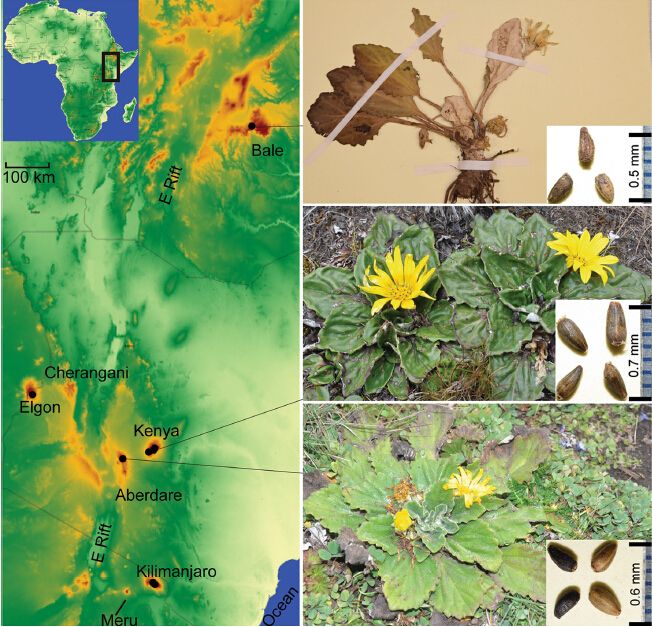Plant Phylogeography of East Africa Suggests Potential Geographic Barrier for Plant Dispersal and Gene Flow
2015-06-29
As a biodiversity hotspot with at least 12, 000 plant species, East Africa is characterized by elevated plateaus and isolated mountains in Ethiopia, Uganda, Kenya and Tanzania. Exploring the plant diversity, phylogeography of East Africa will contribute to the protection and development of the biological resources.
Supervised by Prof. WANG Qingfeng from the Sino-Africa Joint Research Center and Adaptive Evolution of Aquatic Plants Research Group (Wuhan Botanical Garden), CHEN Lingyun and his colleagues studied the phylogeography of Haplocarpha rueppelii (Sch.Bip.) Beauverd distributed in East Africa.
This team sampled 65 individuals of 8 populations/locations of H. rueppelii including hairy and glabrous forms from Elgon, Aberdare, Kenya, Kilimanjaro and Bale, covering most areas in which the species was distributed.
One nuclear and 3 chloroplast DNA fragments were sequenced, and phylogeographic analyses were also conducted to test the taxonomic rank of the two forms and causes for the differentiation (intrinsic reproductive isolation and geographic barrier).
Divergence time estimation using rate calibration and fossil calibration showed that the species has occurred in Mts. Kenya and Aberdare in the Pleistocene. However, gene flow analysis suggested low migration rate for individuals between the two mountains. All the results suggested a barrier for plant dispersal and gene flow would have existed between Mts. Aberdare and Kenya since Pleistocene.
The study demonstrates a potential geographic barrier in East Africa, further studies on alpine plants such as giant Lobelia, Dendrosenecio, etc. should be carried out to verify the barrier.
This work was supported by Sino-Africa Joint Research Center and the National Natural Science Foundation of China. Results were published in Science Bulletin entitled “Phylogeography of Haplocarpha rueppelii (Asteraceae) suggests a potential geographic barrier for plant dispersal and gene flow in East Africa”.

Sampling localities and photos of Haplocarpha rueppelii (Image by CHEN)

Principal coordinate analysis (a) and average bidirectional migration rates among populations (b) (Image by CHEN)